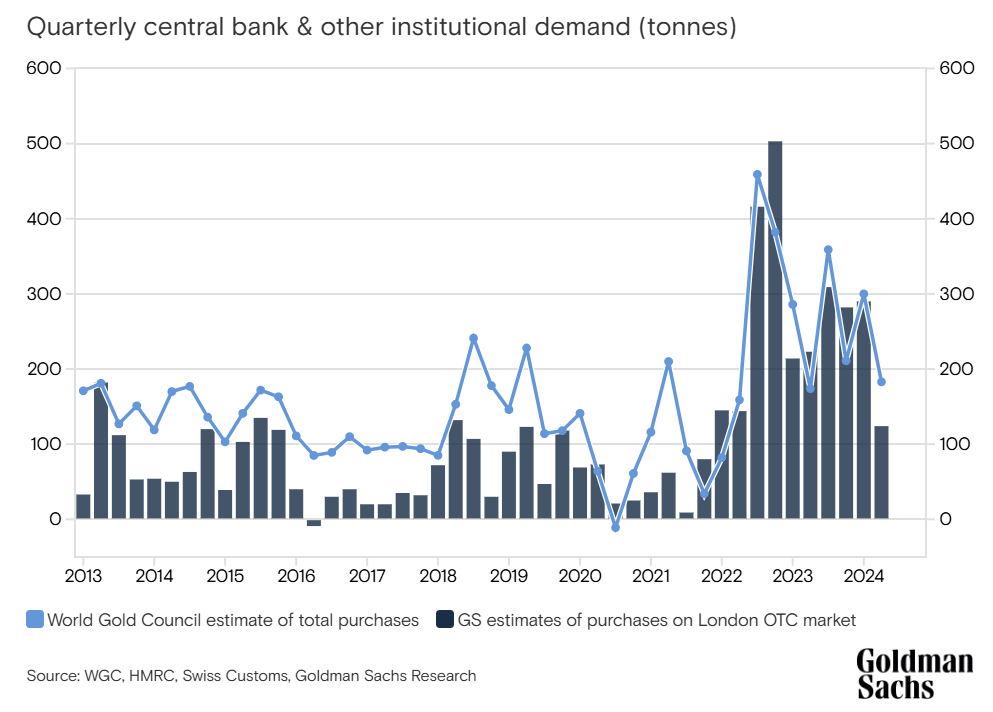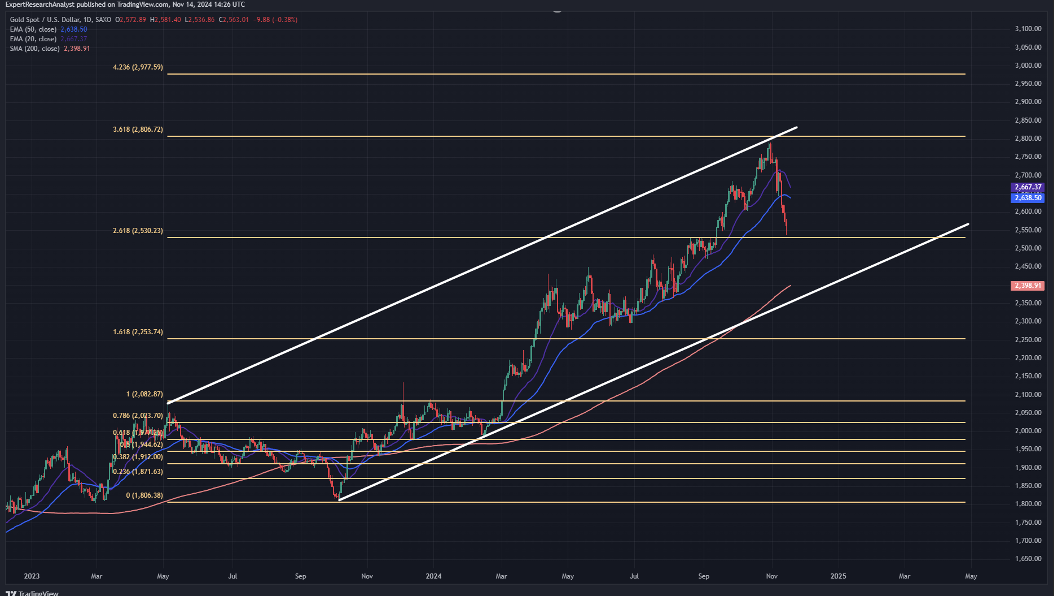
Inflation, interest rates, and geopolitics
Inflation and interest rates influence gold prices. When inflation soars, investors tend to buy gold to protect their purchasing power. They view it as a much safer investment than stocks or bonds because stocks are prone to sudden price drops, and bonds can lose value when interest rates rise due to high inflation. Historically, though, when real interest rates (which are inflation-adjusted) have declined, gold has just soared. As some would say, ‘There is no better buy’.
By 2024, the percentage of overall reserves held in gold by central banks had reached 10%, a significant climb from the 3% level recorded just 10 years earlier. Although we are still in an era where most reserve currencies are fiat (for example, paper with little intrinsic value), an increasing number of central banks seem to believe that holding gold adds an element of prudence to their reserve diversification strategy. Emerging economies, especially in Asia, are seeing their central banks take on an increasingly important role in the gold market. China (which now
holds 5% of its reserves in gold), along with India, has emerged as one of the preeminent buyers of gold.Moreover, the central banks of the emerging economies have, since 2022, stepped up their pace of gold buying. The catalyst for this last development was the unprecedented freezing of Russian assets, which prompted multiple nations to reconsider the makeup of their reserves.

Furthermore,
the
global
shift
towards
a
more
sustainable
economy,
including
investment
in
renewable
energy
and
green
technologies,
is
driving
limited
demand
for
certain
commodities,
such
as
precious
metals
that
include
gold.
Gold
plays
an
important
role
in
clean
energy
technologies,
including
solar
panels
and
electronics
for
energy-efficient
systems.
This
increased
demand
for
technological
gold
is
exacerbated
by
growing
concerns
about
the
lack
of
resources
necessary
for
the
green
transition.
Moreover, geopolitical tensions and economic uncertainty further underscore the attractiveness of gold as a safe asset, attracting investors seeking relief amid rapid changes in global markets. The Ukraine conflict, strained US-China relations, and unrest in the Middle East have sent investors scurrying to safe-haven assets. And when it comes to safe havens, gold is a time-tested destination. Its record of price stability in an unstable world at present stands in stark contrast to the behaviour of the stock market and other assets. An instance of this is China’s recent accumulation of gold, which now makes up 5% of its foreign exchange reserves. This is yet another sign of a shift towards resilience in a global economy fraught with uncertainty.
Technical
analysis:
key
levels
to
watch
According
to
the
technical
analysis,
the
asset’s
price
is
still
in
the
uptrend,
even
on
a
high
timeframe.
The
long-term
bullish
trend
also
hasn’t
changed
for
a
bearish
one.
The
$3,000
target,
which
aligns
with
the
4.236
Fibonacci
extension
level,
is
pretty
real.
However,
this
level
may
be
too
ambitious
for
the
moment
of
publication.

Prospects
for
2025
–
factors
shaping
gold’s
future
According
to
the
Chief
Economists’
Survey
from
the
World
Economic
Forum,
economists
are
uncertain
about
global
economic
stability.
54%
of
respondents
forecast
a
steady
outlook
and
37%
project
further
deterioration.
Future
fiscal
policies
targeting
climate
adaptation,
a
shifting
demographic
landscape,
and
ramped-up
defence
spending
are
set
to
push
inflation
upwards.
All
these
look
to
gold
as
an
inflation
hedge;
however,
it’s
not
just
private
investors:
central
banks
are
in
on
the
gold
thing,
too.
They
are
expected
to
keep
topping
up
their
gold
reserves
and,
in
the
face
of
all
these
other
demands,
are
likely
to
maintain
long-term
demand.
So will gold hit the $3,000-per-ounce price in 2025? The scenario seems very possible. However, for the asset’s price to reach a rather ambitious target, favourable market conditions are required. They include both macroeconomic and geopolitical factors. For example, the re-election of Donald Trump introduces additional variables into the equation. Trump’s geopolitical stance, particularly regarding global trade and conflict resolution, could influence investor sentiment and safe-haven demand. If his promises regarding the resolution of numerous conflicts are fulfilled, investors may partially abandon safe-haven assets for the riskier ones.
Hashtag: #Octa
The issuer is solely responsible for the content of this announcement.
Support InfoStride News' Credible Journalism: Only credible journalism can guarantee a fair, accountable and transparent society, including democracy and government. It involves a lot of efforts and money. We need your support. Click here to Donate
